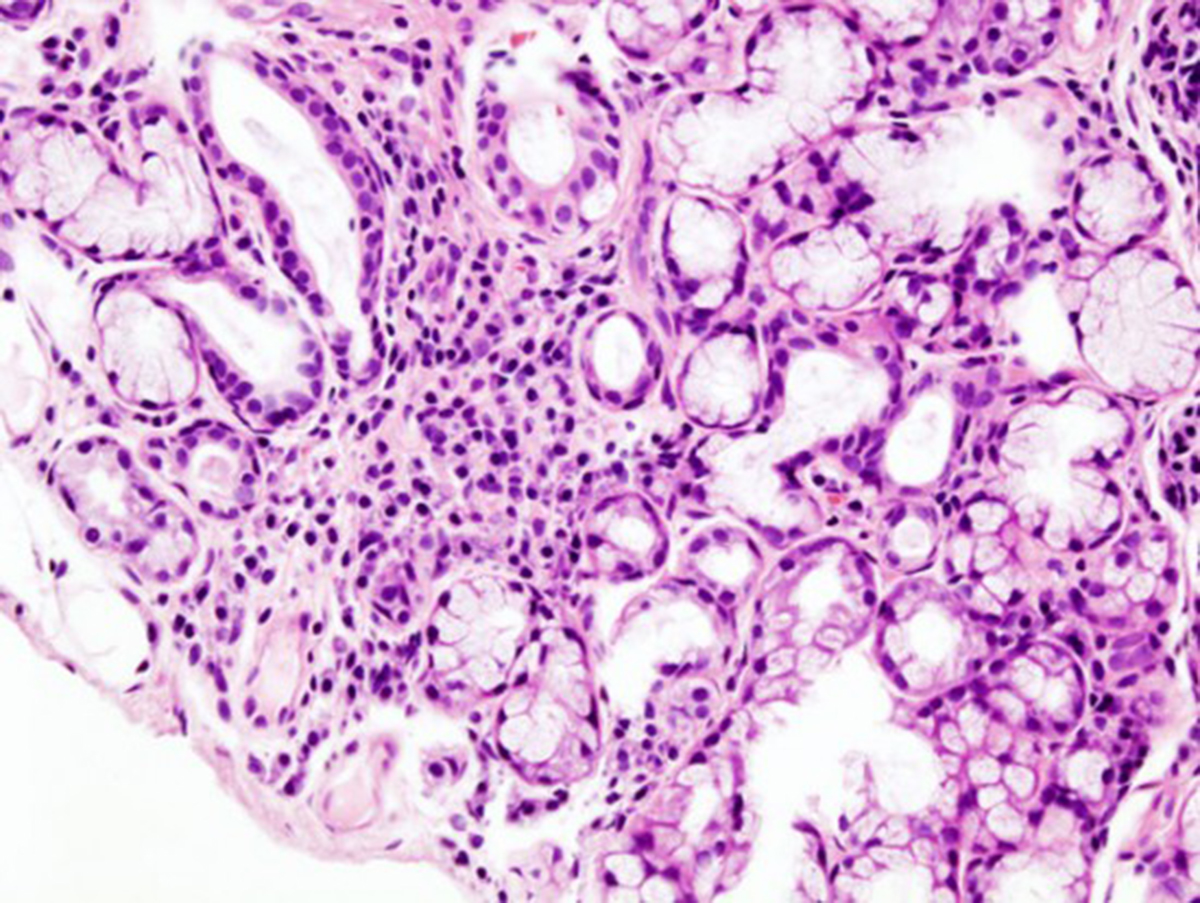Table of Contents
The cause is still unknown and it usually occurs in women around 50 years old. Patients with this condition may notice irritation, a gritty feeling, or painful burning in the eyes. Dry mouth or difficulty eating dry foods and swelling of the glands around the face and neck are also common. Some patients experience dryness of other mucous membranes and skin. Other non-specific symptoms that patients might experience include chronic fatigue and fever.

There are two types of this syndrome:
- Primary Sjögren's syndrome - this type occurs in people with no other rheumatologic disease
- Secondary Sjögren's occurs in people who have another rheumatologic disease, most often systemic lupus erythematosus and rheumatoid arthritis
Incidence
It is estimated that between 1 and 4 million Americans, or 1 to 2 percent of the population, have Sjögren's syndrome. This condition can affect people of any age, but symptoms usually appear between the ages of 45 and 55.
It affects women 10 times as often as men. It is also proven that about 50% of the patients also have rheumatoid arthritis or other connective tissue diseases, such as systemic lupus.
Possible causes of Sjögren’s syndrome
Unfortunately the cause of Sjögren's syndrome is not known, but most experts believe that this disease has an autoimmune background. People with this disease have abnormal proteins or antibodies in their blood suggesting that their immune system is reacting against their own tissue.
It is also proven that the decreased production of tears and saliva seen in this syndrome occurs because these glands are damaged by inflammation. Research suggests that genetic factors and possibly viral infections could be involved.
Symptoms of Sjögren’s syndrome
The majority of the patients with Sjögren’s syndrome have symptoms related to:
- diminished tears and salivary gland functions
- arthralgia
- Raynaud’s phenomenon
- fatigue
The patients usually complain of dry eye symptoms, including burning, itching or foreign body sensation and accumulation of thick secretions in the eyes. With time conjunctiva injection, reduced visual acuity and increased photosensitivity develop.
Symptoms related to mouth
Drying of the mouth, a condition also known as Xerostomia, is frequent but variable in severity. Patients usually complain of difficulty in eating dry food, inability to speak continuously, oral soreness, changes in tasting and smelling and fissures of the tongue and lips. An increase in dental caries is due to decreased saliva volume and the relative loss of its antibacterial factors. Involvement of other exocrine glands occur less frequently.
Systematic features
Systemic features can complicate the course of the Sjögren’s syndrome and are seen in 30% of the patients. Most patients complain of:
- easy fatigability
- low-grade fever
- myalgias
- arthralgia
- non-erosive
Renal involvement includes:
- interstitial nephritis
- hypostenuria
- renal tubular dysfunction
- Fanconi’s syndrome
Central nervous system involvement includes:
- focal and diffuse defects
- multiple sclerosis
- progressive dementia
- cognitive dysfunction
- spinal cord involvement
- myelitis
Diagnosis of Sjögren’s syndrome
The proper diagnosis of Sjögren’s syndrome should be based on the presence of two of the three following manifestations:
- keratoconjunctivitis sicca
- xerostomia
- connective tissue or lympho-proliferative disorder
Biopsy
Minor salivary gland biopsy serves as the cornerstone of the diagnosis.
Schirmer’s tear
Schirmer’s tear test is used for evaluation of tear secretion by the tear glands. The test is performed with strips of filtered paper slipped beneath the inferior lid of an anaesthetized eye. After 5 minutes the wetting length of the paper is measured. Wetting of less than 5 mm is a strong indication for diminished secretion.
Slit-lamp examination
Keratoconjunctivitis sicca, the product of decreased tear production, is diagnosed with slit-lamp examination. It is done after using Rose Bengal staining of the corneal epithelium. Rose Bengal is a dye which stains the devitalized epithelium of both the cornea and conjunctiva.
The differential diagnosis of Sjögren’s syndrome includes other diseases which may cause dry eyes or mouth or parotid salivary gland enlargement
Tests
Tests for Sjögren’s syndrome may include:
- Antinuclear antibodies (ANA) (positive)
- Rheumatoid factor (RF) (often positive)
- Antibodies specific to Sjögren’s syndrome (SS): anti-SS-A and SS-B; SS-A is also called Ro, while SS-B is also called La (usually positive)
- www.medstudents.com.br
- www.labtestsonline.org
- www.rheumatology.org
- image: www.bio.davidson.edu
- Photo courtesy of KGH by Wikimedia Commons : en.wikipedia.org/wiki/File:Sjogren_syndrome_(2).jpg

